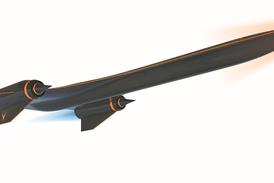Keeping an aircraft safe while pleasing passengers is a difficult art, but the perception of danger also has to be considered
It would be easy to make an instant - and disapproving - judgement on the decision by a British Airways Boeing 747-400 captain to continue a scheduled Los Angeles-London flight despite having shut down one of the engines within seconds of take-off. Closer examination, however, reveals a great deal about the complexities of decision making in modern, reliable commercial air transport aircraft, and tends to temper the initial reaction.
The passengers were not in danger at any point during the flight once the crew had successfully dealt with the No 2 engine's surge and over temperature problems by shutting it down, and had stabilised the now three-engined aircraft in the climb. Once the pilots had recalculated drift-down altitudes for the two-engine case and found them adequate for the route - and determined that the fuel was also enough for the full journey – the decision making was no longer about black-and-white issues.
The take-off - in which full powerplant redundancy is required (except for ferrying) - had been completed. With three engines the aircraft still had power unit redundancy, albeit less than usual and also with lower aircraft performance margins.
As BA's 747 fleet manager adeptly stated: "Safety was assured, so the only issue was where to land, which is a customer service issue." In simplistic customer service terms, their chosen destination is unquestionably where the passengers wanted to go.
However, in choosing an airline, passengers are choosing more than means to fly to a destination. Far be it from Flight International to recommend management (of an aircraft) by committee, but imagine the captain making this announcement over the cabin address system: "Ladies and gentlemen, we have had to shut down one of the engines because it was not performing as it should. That is absolutely no problem, so do not be concerned for your safety. In fact we have the option of continuing safely to London. My first officer and I are confident that this is the best option, but the purser will be coming around the cabin to take a poll of how many of you would like to proceed, and how many prefer to divert to one of the major airports nearby where you would be found alternative flights tomorrow."
Probably quite a few would trust the crew sufficiently to vote for continuing, but almost certainly a greater number would vote for diversion, despite the inconvenience.
In the event the passengers suffered inconvenience anyway, because the crew could not secure the best flight level across the Atlantic. This increased fuel burn and gave them less favourable tailwinds. As a result, the crew knew they would have to make a fuel diversion. So the fleet manager's statement that "the only issue was where to land" may have been technically correct, but successful journey completion is subject to the aircraft's reduced performance, which makes all the operational margins much tighter. In making a decision for "customer service reasons", the issue is not only one of safety but the many potential operational effects of the tighter margins.
Knowledge is power
From about 2008, the aviation world will learn much more quickly and accurately about the causes of accidents or serious incidents involving US-registered aircraft.
The Federal Aviation Administration has taken a long time to follow National Transportation Safety Board (NTSB) recommendations to upgrade the specifications for flight data and cockpit voice recorders (FDR and CVR), but finally it has published a notice of proposed rulemaking (NPRM) that should put a smile on the NTSB's face.
More capable, more survivable FDRs and CVRs will make accident investigation much easier, quicker and -- even more importantly - more accurate in its diagnoses. A multitude of accidents have occurred in which the "probable cause" was what probably happened, but the world will never be completely sure of any of them.
Classic examples include the 1994 USAir Pittsburgh and 1991 United Airlines Colorado Springs accidents. Both involved Boeing 737s and were judged to be uncommanded "rudder hardover" accidents. But the evidence from the primitive data recorders did not prove rudder hardover beyond all doubt; the decision was made on the grounds of what little was known plus the elimination of alternatives.
And any industry-watcher could come up with his/her favourite example of cases where conspiracy theories could have been laid to rest much more quickly with better data.
Source: Flight International























